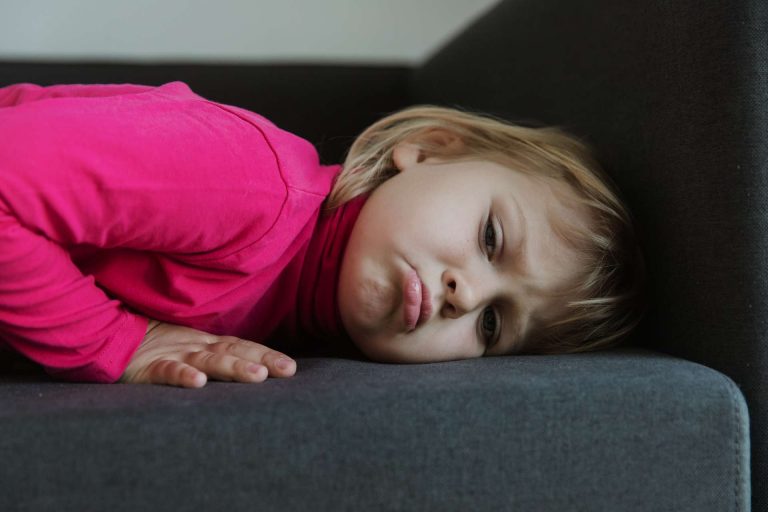Early Signs of Autism: Recognizing Symptoms and Getting Help
If you suspect that your child may have autism, it’s important to recognize the early signs and seek help. Learn about the symptoms of autism

Anxiety is a natural response to stress that every person experiences at some point in their lives. However, when anxiety becomes persistent and starts interfering with daily activities, it can be a cause of concern, especially in children. Anxiety in children is not uncommon, and it can manifest in various ways. As parents, caregivers, or teachers, it is essential to understand the signs and symptoms of anxiety in children so that appropriate help can be provided. In this article, we will explore the topic of anxiety in children in detail, including the signs and symptoms, causes, and ways to manage it.
Anxiety is a feeling of worry, nervousness, or unease about something with an uncertain outcome. It is a natural response to stress that can be helpful in certain situations, such as during an exam or before a job interview. However, when anxiety becomes persistent and starts interfering with daily activities, it can be a cause of concern.
Anxiety is not limited to adults; children can also experience anxiety. In fact, anxiety disorders are one of the most common mental health conditions in children. According to the Anxiety and Depression Association of America (ADAA), anxiety disorders affect one in eight children.
There are several types of anxiety disorders that can affect children, including:
Anxiety in children can manifest in various ways, and the symptoms may differ depending on the age of the child. Some common signs and symptoms of anxiety in children include:
Causes of anxiety in children can vary and may be related to genetic, environmental, or social factors. Children who have a family history of anxiety disorders are more likely to develop anxiety themselves. Environmental factors such as stress at home or school, traumatic events, or exposure to violence can also contribute to anxiety in children. Additionally, children who have difficulty regulating their emotions or who have a tendency to worry may be more susceptible to developing anxiety. Certain medical conditions or medications can also cause anxiety in children. It’s important to note that anxiety can occur without an obvious cause or trigger.
Anxiety can have a significant impact on children’s lives, both in the short and long term. If left unmanaged, anxiety can lead to academic difficulties, social isolation, and physical health problems. Anxiety can also increase the risk of developing depression and other mental health conditions later in life.
Managing anxiety in children can be a challenging process, but it is essential to address the issue as early as possible. Here are some tips for managing anxiety in children:
It is essential to create a safe and supportive environment for children to express their fears and concerns. Parents, caregivers, and teachers should listen to children’s worries and validate their feelings.
Teaching children coping skills can help them manage their anxiety. Simple techniques, such as deep breathing exercises, mindfulness, and positive self-talk, can be effective in reducing anxiety.
Encouraging healthy habits, such as regular exercise, a healthy diet, and good sleep hygiene, can help reduce anxiety in children.
Practicing relaxation techniques, such as yoga or meditation, can help children relax and reduce anxiety.
If anxiety is significantly impacting a child’s life, seeking professional help from a mental health professional, such as a therapist or counselor, may be necessary.
Here are some additional tips for parents, caregivers, and teachers who are supporting children with anxiety:
Professional treatment for anxiety in children may involve therapy or counseling, such as cognitive-behavioral therapy (CBT), which can help children learn to manage their anxiety by changing negative thought patterns and behaviors. In severe cases, medication may also be prescribed, but this is usually a last resort.
Medication is generally not the first-line treatment for anxiety in children, but it may be prescribed in severe cases. Antidepressants, such as selective serotonin reuptake inhibitors (SSRIs), are often used to treat anxiety in children. However, these medications should be used with caution and under the supervision of a mental health professional.
There are several natural remedies that can be used to help manage anxiety in children. These include:
It is essential to seek help for anxiety in children if it is significantly impacting their daily life. Some signs that it may be time to seek professional help include:
Preventing anxiety in children can be challenging, but there are some strategies that parents, caregivers, and teachers can use to help reduce the risk of anxiety. These include:
Anxiety is a common and treatable condition in children, but it can have a significant impact on their daily lives if left unmanaged. Recognizing the signs and symptoms of anxiety in children and seeking professional help if necessary can help children manage their anxiety and improve their overall well-being. By creating a safe and supportive environment, teaching coping skills, and encouraging healthy habits, parents, caregivers, and teachers can help children develop the tools they need to manage their anxiety and thrive.
Yes, anxiety can have a genetic component, meaning it may run in families.
Yes, anxiety can be a common response to trauma in children, such as abuse, neglect, or exposure to violence.
Normal worries in children are usually short-lived and do not significantly impact their daily life. Anxiety, on the other hand, can cause significant distress and interfere with a child’s ability to attend school or participate in social activities.
Medication can be effective in treating anxiety in children, but it should be used with caution and under the supervision of a mental health professional.
If you suspect that your child may have autism, it’s important to recognize the early signs and seek help. Learn about the symptoms of autism

Get Your Resources to Your Email Now!
Comments (2)
Dineanddiet
Anxiety in children is an issue close to my heart, and I want to thank you for addressing it in such a comprehensive manner. It’s often overlooked how anxiety can impact a child’s life both in the short and long term. I particularly appreciate the section on natural remedies and prevention strategies. Providing children with tools to cope with their emotions and fostering a sense of control can make a world of difference. Let’s work together to break the stigma surrounding mental health and ensure that every child gets the support they need to thrive.
Dineanddiet
This article sheds light on a topic that often goes unnoticed – anxiety in children. It’s disheartening to learn that anxiety disorders affect one in eight children, making it more important than ever to understand and address this issue. The breakdown of different types of anxiety disorders in children and their symptoms was very insightful.